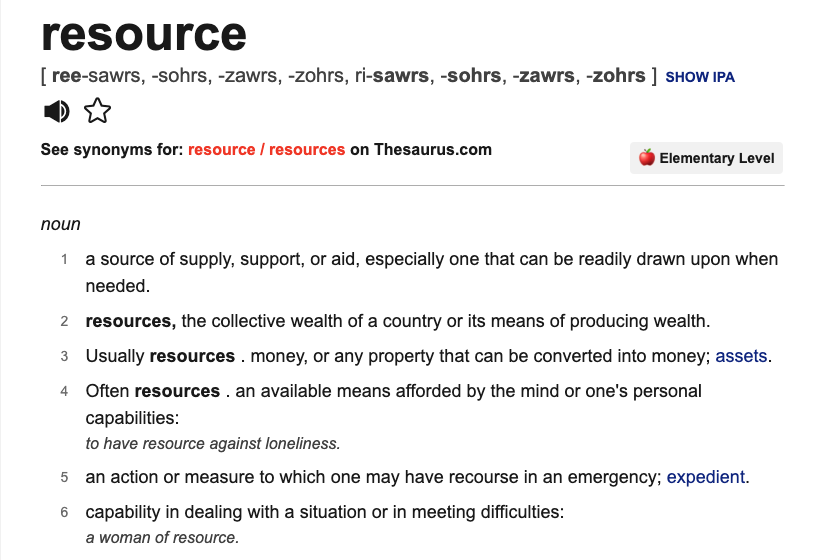When running a successful business, many tools and frameworks are necessary: from Agile, Scrum@Scale, Jira, technology equipment, inventory, technology, office supplies, you name it – a lot of resources are needed to keep a business running.
But unlike the Webster’s Dictionary definition below, staff or people are not a resource. Instead, the people who work for you should be valued and appreciated as more than just tools in your tool belt.
This is why businesses need to develop and promote a people-first philosophy when running their business. Below are four steps you can follow to create a people-first philosophy

Step 1: It Begins with Leadership
We all know that nothing happens in a company’s operations without buy-in from the leadership. To change your company’s culture to be a people-first leader as opposed to traditional leadership models. Leadership must learn to provide the teams with a clear vision and give them the tools and empowerment to make it successful.
Step 2: Get to Know Your Team
Many leaders assume that everyone is motivated by the same things: to be successful, grow their business, and make money. While these may drive the owner or manager of a company, not everyone thinks the same way.
If you take the time to listen and get to know your employees, you will learn what motivates them individually. Not everyone has the urge to advance their career or move up the corporate ladder. Some may be motivated by making money to allow them to travel, provide for their family, or simply pay the rent. While different, these motivations are enough to inspire people to do an excellent job as those with career advancement in mind. People-first leaders avoid one-size-fits-all thinking. Instead, they seek to learn and understand what motivates the different team members and adapt their leadership style to match individual needs.
Step 3: Invite Input and Collaboration
We all want to feel like we are making a difference and contributing to building something great. Instead of creating an incubator for ideas exclusively amongst your company’s leadership, think outside the box about who on your team would bring a fresh perspective.
Leaders should be holding regular meetings or checking in with their team members from time to time. By meeting with employees, you will find precious insights into how the company functions and what is and is not working.
Step 4: Colleagues, Not Employees
People-first leaders understand how important it is to connect with people in the company as colleagues, not employees. (This has never been more important in a remote environment.) They do this by taking the time to reach out and talk to people continuously.
Instead of rushing into the office in the morning with your head down or immediately logging in remotely to start working. The people-first leader has time to say good morning and get frequent feedback and input. This helps colleagues get to know leaders as people, regardless of titles and job functions. They are showing inclusiveness and respect for the purpose that everybody fulfills in the company. That’s how they earn their buy-in, trust, and respect.
In the comments section, tell us how you are becoming a more engaged remote leader.
Contact Us to Develop a People-First Philosophy
We would love to help you implement practices to develop a people-first workplace. If you want to discuss tangible ways to do this, contact us to schedule a free training consultation.